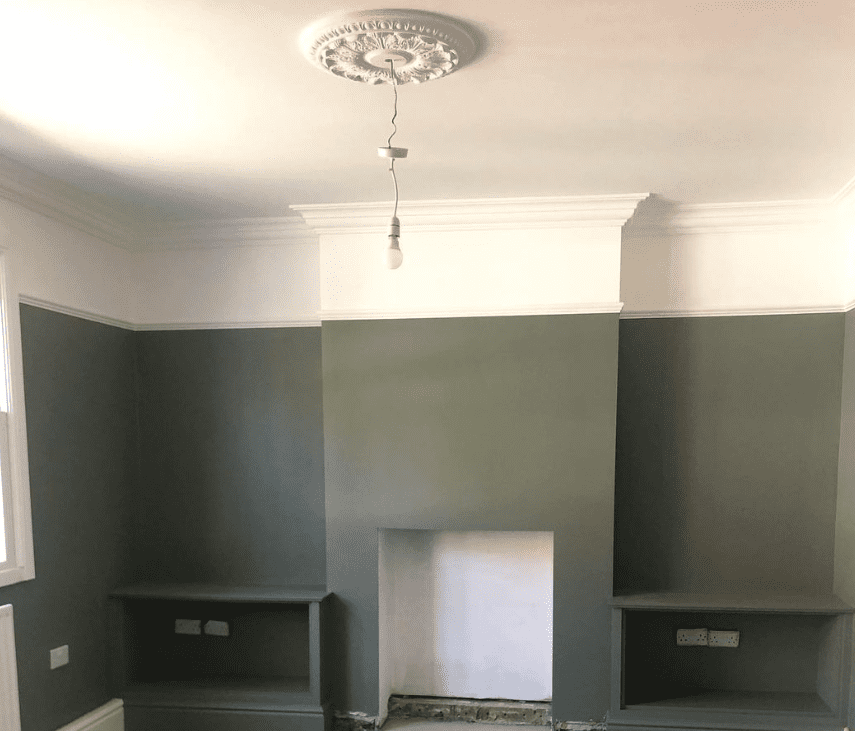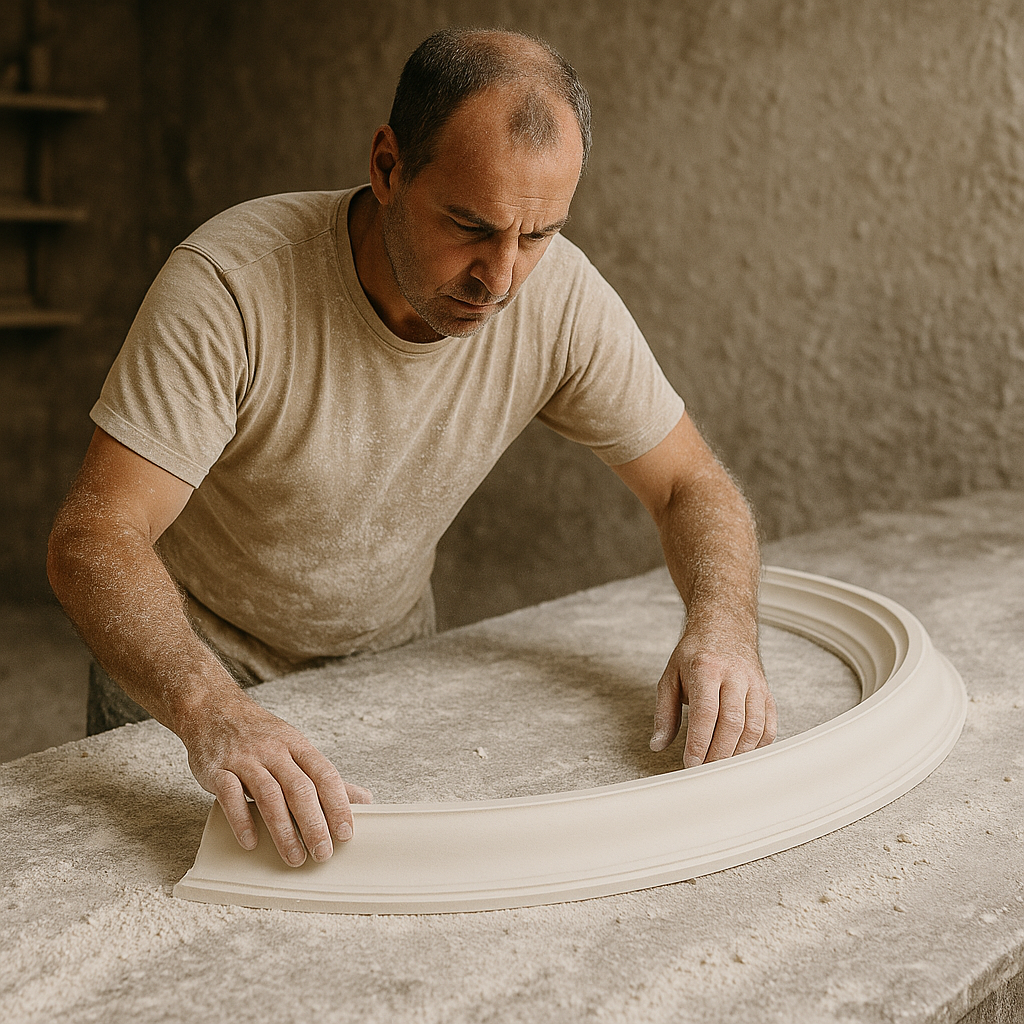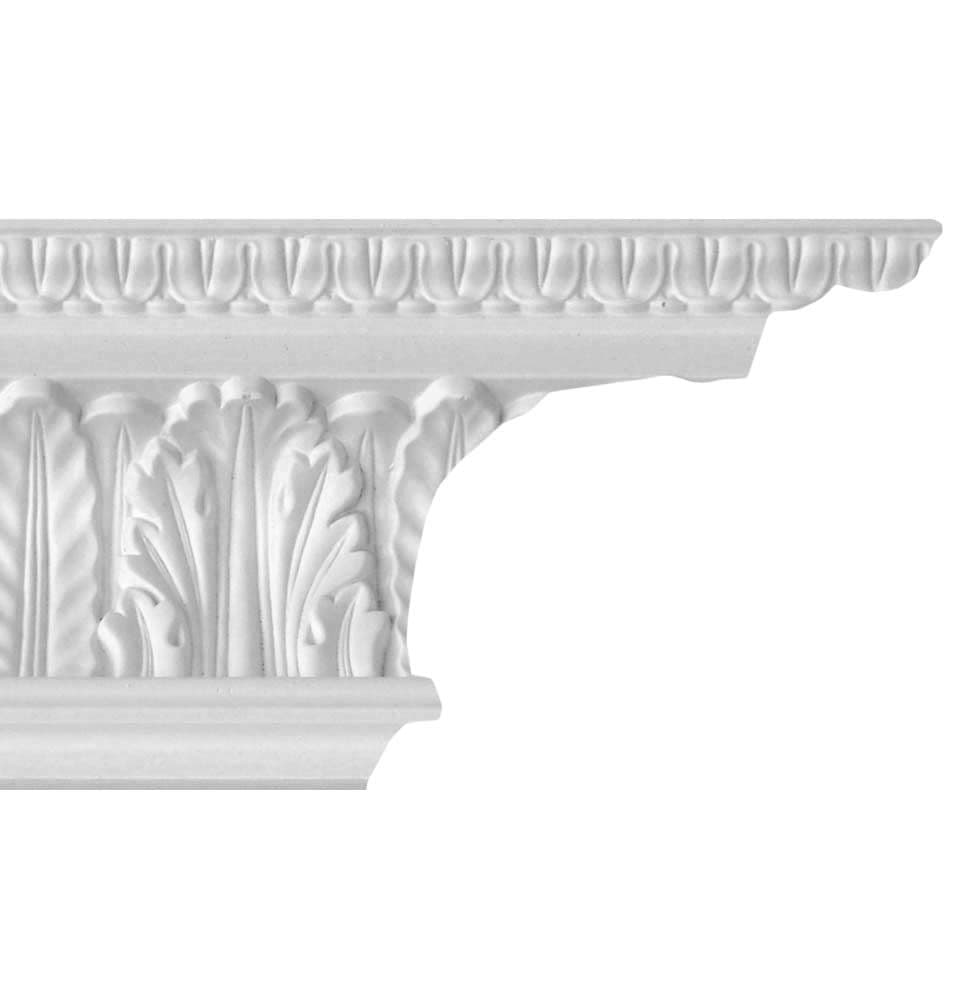News
Coving Styles Explained: Victorian, Edwardian, Georgian, and Art Deco
Decorative plaster coving has long been a hallmark of refined interior design, bringing elegance and definition to the transition between walls and ceilings. From the restrained symmetry of Georgian homes to the bold geometry of Art Deco interiors, each era has left its stamp on plasterwork. In this guide, we explore the most popular traditional coving styles to help you choose the right one for your project. Georgian Coving (1714–1830) Key features: Symmetry, subtle curves, and classical influence Georgian coving is all about proportion and simplicity. Inspired by classical Greek and Roman architecture, this style typically features smooth, shallow concave curves (known as ovolos) with clean lines and minimal ornamentation. Ideal for rooms with high ceilings and a sense of grandeur, Georgian coving creates a refined, understated backdrop that works well in both period and modern homes. Common motifs: Egg and dart, dentils, and fluted lines (but often very subtle) Best for: Formal living rooms, hallways, dining areas, and properties with neoclassical or early Georgian character Victorian Coving (1837–1901) Key features: Decorative, layered, and often large in scale With the rise of industrialisation, the Victorian era saw an explosion of architectural embellishment. Coving became more elaborate, with bolder projections and richly detailed designs. Layered profiles, floral motifs, acanthus leaves, and dentil borders are common. Victorian coving suits high-ceilinged homes and adds a strong period identity to a room. Common motifs: Egg and dart, acanthus leaves, scrolls, dentils, floral garlands Best for: Traditional living rooms, stairwells, formal bedrooms, and large heritage properties Edwardian Coving (1901–1910s) Key features: Lighter, cleaner lines with classical echoes The Edwardian period introduced a softer and more restrained take on Victorian style. While still decorative, Edwardian coving is usually less ornate and more geometrically balanced. This style often incorporates modest steps, linear detail, and gentle ogee curves. It brings sophistication without overwhelming a space. Common motifs: Step mouldings, small egg and dart patterns, modest floral or beaded detailing Best for: Transitional spaces, bedrooms, and early 20th-century homes with wider hallways and large bay windows Art Deco Coving (1920s–1940s) Key features: Bold, geometric, and streamlined Art Deco brought a break from tradition with a love for symmetry, speed, and stylised design. Coving from this era tends to be more angular, with sharp step profiles and linear forms. There’s often a sense of movement and rhythm in the design, achieved through layered steps and strong horizontal lines. Common motifs: Stepped profiles, sunbursts, zigzags, chevrons, and geometric banding Best for: Stylish 1930s properties, modern apartments, or bold design schemes looking to incorporate vintage glamour Choosing the Right Style for Your Home When selecting coving, consider the age and architectural details of your property. Matching period features can elevate a room, while mixing styles should be done carefully to preserve harmony. Keep in mind ceiling height, room size, and the desired visual impact—some profiles are deliberately subtle, while others are statement pieces in their own right. At PlasterCoving.co.uk, we handcraft a wide range of period-accurate plaster coving using traditional techniques and the finest British gypsum. Whether you're restoring a Georgian townhouse or adding character to a contemporary home, we’re here to help you find the perfect profile.
Learn moreThe Story Behind Handmade British Coving
When you admire the crisp lines and elegant detail of handmade plaster coving, you’re not just looking at a decorative feature—you’re seeing the result of centuries of British craftsmanship, natural materials, and environmentally conscious production. At the heart of it all lies one key ingredient: gypsum plaster. What Is Gypsum Plaster? Gypsum is a naturally occurring mineral—calcium sulphate dihydrate—commonly found in sedimentary rock layers. When processed and heated, it becomes a fine, versatile powder known as gypsum plaster. This material has been used in interior design and construction for thousands of years—from ancient Egyptian tombs to grand British period homes. But where does the gypsum used in handmade British coving come from today? Sourced from British Soil The gypsum plaster used in our coving and ceiling roses is sourced right here in the UK, primarily from quarries in the East Midlands. British Gypsum, the country's leading supplier, extracts and processes the material locally, meaning the plaster in our products travels minimal miles from quarry to workshop. That translates into a significantly lower carbon footprint compared to imported or synthetic alternatives. This short, local supply chain is part of what makes handmade plasterwork not only beautiful—but also environmentally responsible. Why Gypsum Plaster Is a Green Choice Gypsum plaster is not just effective and elegant—it's one of the most eco-friendly building materials available today: ✅ 100% natural and recyclable ✅ Low embodied energy during production ✅ Non-toxic and VOC-free, ideal for healthy home environments ✅ Naturally fire-resistant and breathable And because our mouldings are crafted to last a lifetime, there's no need for regular replacements - unlike cheaper, mass-produced alternatives made from plastic or polyurethane. Supporting Traditional British Craftsmanship Every piece of plaster coving we make is hand-poured and finished by skilled artisans in our Yorkshire workshop. These traditional methods have been passed down through generations, preserving not just the techniques but the values of British heritage manufacturing. By choosing handcrafted plasterwork, you’re doing more than elevating your interior—you’re supporting local jobs, sustaining rare skills, and investing in quality that honours both the past and the future.
Learn moreWhen to DIY and When to Hire a Coving Installer
Installing plaster coving is one of the most effective ways to add character and charm to a room—but should you tackle it yourself or hire a professional? While many homeowners are comfortable with DIY tasks, coving installation requires precision, planning, and the right tools. In this article, we’ll help you decide when it’s a job for the weekend warrior and when it’s best left to the experts.
Learn moreWhat’s the Difference Between Coving and Cornice?
If you’ve been renovating a period home or planning a ceiling makeover, you’ve likely come across the terms “coving”and “cornice”. Often used interchangeably, these two types of plaster moulding both serve to soften the join between wall and ceiling—but they aren't exactly the same. So, what’s the difference?
Learn moreThe Timeless History of Decorative Plaster Mouldings
For generations, decorative plaster mouldings have played a key role in enhancing the interiors of homes and buildings, bringing a sense of elegance, character, and sophistication to any space. But where did this tradition begin, and how has plaster coving evolved over time?
Learn moreFrom Workshop to Wall: How Traditional Plaster Mouldings Are Made
At Plaster Coving Ltd, we believe in preserving the artistry of traditional plasterwork — whether it's made here in Britain or imported using time-tested methods...
Learn more












